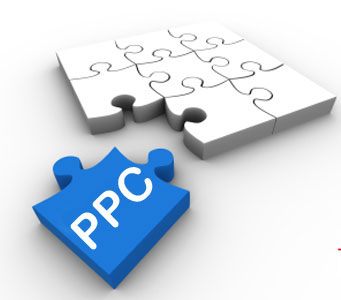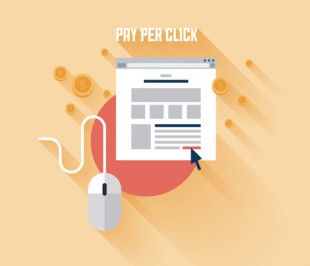Whether you are convinced Google is trying to take over the world, or you think they are simply a company who is simply fantastic at innovating ways to give people what they want, one thing is certain.
They are succeeding, and they succeed because they excel at making things simple for the end-user.
With Google Shopping Campaigns, participating business owners now have access to a platform which works hand-in-hand not only with AdWords, but the user experience. And if you can take advantage of AdWords Scripts, you can now use them to automate the administration of your Shopping Campaigns, which means for the price of a clever coder, you can replace a full-time employee.
The catch, of course, is that you have to work within Google’s parameters to do it, but when you can automatically prioritize your Adwords budget management according to inventory levels and maximum ROI, without ever having to get out of bed in the morning, that is a small price to pay.
Or in other words, Google has done it again.
Still, understanding the new features available with Google’s Shopping Scripts is not intuitive for the technically challenged. Rather than having to BE a coder, Offervault superstars just have to understand what every customer wants to know – how can Entrepreneurs best leverage these added tools without having to pay a consultant. Java is something you drink, not something you write, and this article will help you keep it that way.
However, if you aren’t familiar with Google Shopping Campaigns, some of this might still seem like greek. As you review what you can do with these scripts, keep in mind that essentially what is happening on the customer end is that they have done a Google Search, and the results in their “Shopping” listing are what they see. That’s what your AdWords campaign will be paying for, and given that the folks who are looking at those results are interested in buyers, this can conceivably be the best sort of targeting – customers who are ready to buy something you are selling, who are ready to buy right now.
New Features, What are they and what can you do with them
From automatically creating reports, to having new products listed simply by filling out a spreadsheet, these new features can make your lives easier. As this is fairly new, this list of ideas should not be considered exhaustive. Rather, like the tip of an iceberg, there’s a lot beneath the surface that has yet to be realized by clever marketers. The scripts, as with any programming, are only limited by imagination. Conceivably anything that you can evaluate and execute by reading a report, you can do by utilizing Google Shopping Scripts, and that all by itself is HUGE.
-
Automatically retrieve specific Campaigns and Ad Groups
One of the best reasons to code ANYTHING as mentioned earlier is to generate a report. The more products you have, or the more specific types of customers you have, the more difficult it is to pin-point the specific bit of data that can help you drastically increase profits. For example, if you have a large number of products, being able to tell at a glance which products are selling based off of which ad campaigns can give you a more accurate idea of not only which are your best products, but which products’ profits are being killed by what on the surface seems like an effective campaign.
Take for example printers. Some savvy business owners understand that a product like a printer can actually be a loss-leader if you can effectively engage your customers in purchasing the ink from you afterwards. In this scenario, your Adwords campaign plays a huge role in understanding your profitability. It is conceivably possible to have a campaign that is very good at selling printers, but very bad at selling the ink afterwards.
With the proper implementation of Google Shopping Scripts however, this is a non-issue. Using these scripts you can generate a report based off of click rates, AdWords ROI, and any external spreadsheet which would list the effectiveness of your non-Google ink-selling campaign.
On top of that, because of the ability to pull information from external data, you can even adjust what you are spending to promote a given product based off of things like inventory levels. No more promoting products which you don’t have. This negates the need to tell a customer that the product they just bought isn’t coming. Even better, this allows for automatically adjusting the customer experience by offering only those customers a reasonable discount for delaying shipment that still allows you to turn a profit based off of what you SPENT to acquire them via AdWords.
-
Build Campaigns with scripts
Unless you are familiar with scripting, the last thing you want to do is engage your coder unnecessarily. However, anyone can be trained to fill out a spreadsheet, and that’s what this feature allows. There is of course a lot more to it, but what it boils down to is this – no matter how deep you’ve already gone into setting up your Shopping Campaign, any coder can easily go in and create a script that will update and READ a spreadsheet.
That means, you can conceivably use this tool to have a pencil pusher or your AdWords guy to update one spreadsheet which will then update all of your Shopping and AdWords campaigns, even if the product is something that you never carried before. Couple this with the reporting from above, and when this is done you can even get an Admin level report emailed to you which show you how the new addition impacts your AdWords budget once it has been added. All without your coder having to lift a finger.
-
Selecting Specific product groups
Another reporting feature with quite possibly some VERY interesting applications when considered alongside some of the features already mentioned, this very short explanation warrants some very careful reading.
Essentially, via code, you can automatically select product groups based off everything from color to specific user interactions within the campaign. Want to see all the products that customers looked at that are red? No problem. Want to view all products that customers purchased in the past week? Couldn’t be easier. Do you want to view all products that were red which customers in Europe purchased from iPhones and then automatically increase or decrease what you are bidding for those categories based off how well the campaign is converting? You can have that report sent to you every Tuesday at 12:03PM without having to ask anyone for it.
Like I said, this is a short explanation that warrants careful reading, because there is so much more that you should be thinking about in relation to the options this provides to YOUR business.
-
Updating a Product Group hierarchy
As your shopping campaign grows, while Product Groups aren’t overly complex, they can grow into an extremely large and complex looking tree. If in marketing these campaigns you discover that there is a “Product Group” (or in other words a specific product attribute) that you hadn’t previously considered, updating that listing within the tree can be difficult. Not only because of how it might affect how an AdWords budget is organized, but also because of how it can impact other scripts you might have already implemented.
However, being able to update a “Product Group hierarchy” via a script easily automates this process for you, so that you don’t have to do the mental gymnastics to visualize it on paper first. In short, this is a way for organizing the “outline” of your product groupings automatically, instead of by hand. This is the equivalent of a script that adjusts ALL of your iTunes playlists every time you add a folder full of music. It’s a Time saver.
-
Select the “Everything Else” Product Group for whichever level of product group you need
This is more of a benefit for coders than it is for you as a business owner directly, but it DOES affect your bottom line. Essentially, the “Everything Else” category is a catch-all for every “Product Group” you have. Product Groups are simply product attributes or even benefits. For example, an iPad belongs to the following groups:
-
Tablets
-
Color
-
Size
-
Weight
-
Apps Available
-
Brand
And so on and so forth. The “Everything Else” category is literally everything else that doesn’t fit those “Product Groups”.
So, for a coder, this means that if they need to apply a line of code to “Everything Else” but white iPads that weigh less than a pound, they can do that with one line of code rather than 100 (if you have that many products).
Translation for you – coding just got less expensive, and printing reports that exclude certain factors that you don’t care about just got easier.
-
Create a new shopping ad group
When I mentioned earlier that you can replace a coder with someone that can fill out a spreadsheet, this is the feature that makes that possible. By being able to adjust a spreadsheet and make global changes across not only AdWords and Shopping Campaigns, you no longer need a high-level employee to make low-level changes. Have a new product? Adding it to both AdWords and your Shopping Campaigns is as easy as updating a spreadsheet.
Used in conjunction with the other codes, conceivably a single intern can spend an hour inputting the relevant data which generates a report which updates you with potential costs and budget changes across your most profitable products instantaneously. If you then see something that needs to be changed, rather than having to pass that down to a coder, you can simply update the spreadsheet yourself and then focus on more important things.
And if you run a company that manages these process for OTHER businesses, your job just got a whole lot easier.
Tying it all together
The hardest part about managing a business is in replicating yourself and communicating what you need to know in order to make your enterprise more successful. By understanding what is possible via automation, this creates less time-consuming avenues for maximizing ROI more efficiently and predictably. More time and precision translates into… well less things that you need to worry about. In short, if you can use data to create profit regardless of product, than with the ability to code, automation just got easier.





Everything published made a lot of sense. However, what
about this? suppose you added a little information? I ain’t suggesting your
information is not solid, however what if you added a headline that
makes people want more? I mean OfferVault Presents Google
A strong share, I just with all this onto a colleague who was simply conducting a little evaluation on this. And hubby in reality purchased me breakfast because of I came across it for him.. smile. So ok, i’ll reword that: Thnx with the handle! But yeah Thnkx for spending some time to debate this, I must say i feel strongly over it and love studying more on this topic. When possible, when you grow to be experience, does one mind updating your weblog with a lot more details? Its highly ideal for me. Large thumb up because of this weblog submit!
Perfectly indited subject material, regards for information. “No human thing is of serious importance.” by Plato.